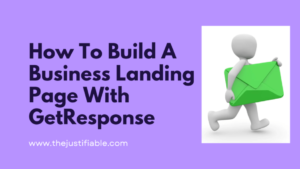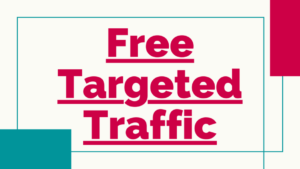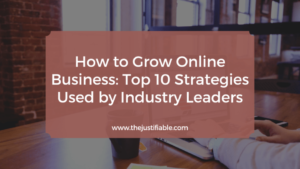Are you struggling to understand how to create an email marketing campaign that actually drives results? Do you wonder what steps are crucial for crafting a campaign that captures attention and converts leads?
In this guide, you’ll uncover a complete roadmap to build an effective email marketing strategy, from setting clear goals to analyzing performance metrics.
Understanding The Basics Of Email Marketing Campaigns
Creating an email marketing campaign requires understanding its purpose and value. At its core, it’s about building relationships with your audience while driving specific actions. Let’s break down the essential elements that make email campaigns impactful.
What Is An Email Marketing Campaign?
An email marketing campaign is a structured series of messages sent to a targeted audience to achieve specific goals. Whether it’s boosting sales, sharing updates, or nurturing leads, these campaigns leverage email to communicate effectively.
Email campaigns work as bridges, connecting brands to their audience in a direct and meaningful way. Unlike other marketing methods, they land in inboxes, fostering personal connections. This ensures higher engagement rates and actionable outcomes, like clicks or conversions.
Every campaign has a unique focus, from product launches to seasonal promotions. By aligning your messages with audience preferences, campaigns become an extension of the value your brand offers. I believe prioritizing user-centric content ensures a more engaging experience.
It’s not just about sending emails; it’s about delivering value. Successful campaigns resonate with the reader, addressing their needs or solving their problems. This is why understanding your audience is a fundamental step in the process.
Imagine opening an email that feels like it was made just for you. That’s the magic of a well-crafted email campaign, and it’s what you should aim for in every message you send.
Why Are Email Campaigns Effective For Businesses?
Email campaigns remain a top choice for businesses because they offer unmatched reach and return on investment (ROI). Unlike social media, email provides a direct line to your audience’s attention.
Emails allow businesses to reach their customers consistently. Unlike fleeting ads, emails stay accessible in inboxes until they’re opened or acted upon. This permanence enhances the chances of engagement.
Campaigns can be tailored for specific audience segments. For instance, businesses can send different messages to new customers, loyal buyers, or those who abandoned carts. Personalization boosts relevance, increasing the likelihood of conversions.
Cost-efficiency is another reason businesses favor email campaigns. I recommend email marketing for startups or small businesses seeking high-impact results without draining their budgets.
Emails also foster trust and loyalty. Regular updates keep customers informed about products, services, and promotions, strengthening the relationship between the brand and its audience.
Key Components Of Successful Email Campaigns
A successful email marketing campaign hinges on a few key elements that ensure its impact and effectiveness. From subject lines to analytics, every part matters.
Subject lines play a vital role in enticing recipients to open emails. A clear, intriguing subject grabs attention immediately. Think of it as a digital handshake that makes people want to engage further.
Content quality can’t be overlooked. Valuable and engaging content, paired with visually appealing design, creates a memorable experience for readers. I suggest focusing on solving reader pain points or sparking their curiosity.
Call-to-action (CTA) buttons guide readers toward specific actions. Whether it’s “Shop Now” or “Learn More,” strong CTAs help campaigns achieve their goals efficiently. They act as the final nudge toward engagement.
Tracking and analytics close the loop. Monitoring metrics like open rates, click-through rates, and conversions reveals what’s working and what’s not. Adjusting based on these insights ensures continuous improvement.
Successful campaigns don’t happen by chance—they’re a result of strategic planning, compelling content, and consistent optimization.
The Role Of Personalization In Email Campaign Success
Personalization transforms ordinary emails into impactful messages that resonate deeply with recipients. It’s a game-changer for building trust and boosting campaign results.
Personalized subject lines alone can increase open rates significantly. Addressing recipients by name or referencing past behavior makes emails feel tailored and thoughtful. It shows you value them as individuals.
Segmentation allows businesses to group their audience based on interests, demographics, or behaviors. This enables tailored messages that speak directly to the recipient’s needs or preferences. I’ve found that segment-specific content yields higher engagement.
Dynamic content is another powerful tool. It adjusts parts of the email, like product recommendations or greetings, based on the recipient’s profile. This approach keeps messages relevant and impactful.
By personalizing the email journey—from welcome sequences to follow-ups—you build relationships that go beyond transactions. Recipients are more likely to act when they feel understood and valued.
Setting Goals And Objectives For Your Email Campaign
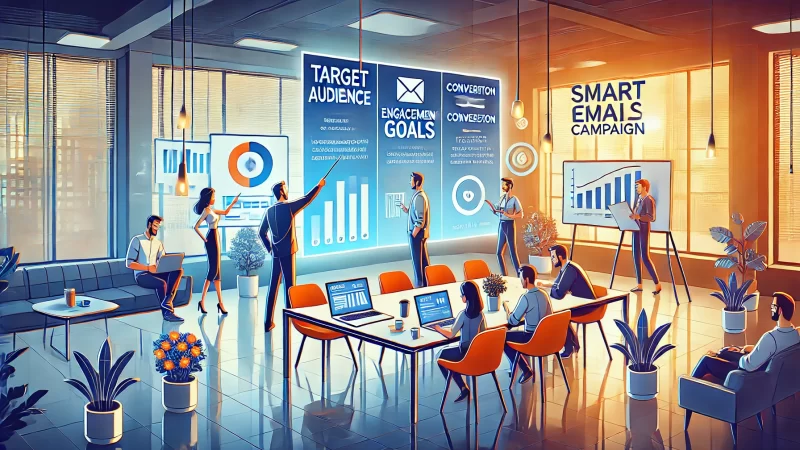
Establishing clear goals and objectives is the foundation of a strong email marketing campaign. Knowing what you want to achieve ensures your efforts are focused and measurable, leading to better outcomes.
Why Clear Goals Are Crucial For Campaigns
Clear goals act as a guiding star, ensuring every aspect of your campaign aligns with its purpose. Without them, campaigns risk becoming scattered or ineffective.
Defined goals help you measure success. For instance, tracking conversions or sales against targets shows whether your strategy is working. I advise setting realistic expectations that challenge yet motivate your team.
Goals also keep your team aligned. Everyone works toward the same outcomes, whether increasing newsletter signups or boosting webinar attendance. Shared focus makes execution seamless.
Having clear goals enables better resource allocation. You can prioritize activities, tools, or content that drive the desired results, avoiding wasted effort on irrelevant tasks.
Every email becomes more purposeful when tied to a goal. Whether informing, inspiring, or persuading, goals give your campaign direction and impact.
Defining SMART Goals For Email Campaigns
SMART (Specific, Measurable, Achievable, Relevant, Time-bound) goals provide a structured approach to planning campaigns. They break down lofty ambitions into manageable and actionable steps.
Specific goals pinpoint exactly what you want to achieve. Instead of saying “increase sales,” set a goal like “generate $5,000 in revenue from this campaign.” This precision sharpens your focus.
Measurable goals allow you to track progress. Metrics like open rates or revenue give you tangible data to evaluate success. I suggest using email marketing tools that offer comprehensive analytics for easy tracking.
Achievability is crucial. Set goals that challenge your team but remain realistic. Unrealistic expectations can demoralize, while attainable goals drive motivation.
Relevance ties your goals to broader business objectives. For instance, an email campaign promoting a new product launch aligns with your growth strategy.
Time-bound goals create urgency. Setting deadlines ensures consistent momentum, keeping your team on track and focused on achieving results.
Examples Of Effective Campaign Objectives
Effective campaign objectives clarify what success looks like. They give teams a clear target to aim for, making every email count toward broader business goals.
An objective like “increase website traffic by 20% in four weeks” focuses on driving audience engagement. It’s specific, measurable, and directly impacts visibility.
For e-commerce, a goal like “achieve 50 sales from this campaign” ties your efforts to revenue generation. This ensures ROI remains a priority throughout the campaign.
Lead nurturing objectives like “convert 10% of subscribers into qualified leads” focus on building long-term relationships. I recommend using segmented campaigns for this purpose to personalize outreach.
Boosting event attendance with objectives like “register 500 participants for our webinar” showcases the campaign’s power to mobilize audiences. Specific CTAs and reminders can help meet these targets.
Aligning objectives with your campaign’s theme and audience needs ensures meaningful results that benefit both your business and your customers.
Building A Targeted Email List For Better Results
A well-curated email list is the backbone of a successful email marketing campaign. By focusing on quality over quantity, you can connect with an audience genuinely interested in your content, driving higher engagement and better results.
Methods For Growing Your Email List Organically
Organic list-building ensures your subscribers are genuinely interested in your brand. These methods create a strong foundation for long-term email marketing success while maintaining the trust of your audience.
Offer valuable resources such as free eBooks, guides, or templates in exchange for email signups. This approach attracts individuals who see immediate value in your offerings and are more likely to engage with future emails.
Incorporate signup forms seamlessly into your website. I suggest placing them on your homepage, blog pages, and even within engaging pop-ups. Ensure they’re simple to complete and clearly communicate the benefits of subscribing.
Utilize social media to drive email signups. Share exclusive deals or behind-the-scenes content that’s only accessible through your email list. This helps tap into an audience already familiar with your brand.
Host webinars or events that require registration. This not only grows your list but also attracts leads interested in specific topics, making it easier to segment and nurture them through targeted campaigns.
Tips For Segmenting Your Email List Effectively
Segmentation is key to delivering personalized content that resonates with different groups within your audience. Proper segmentation boosts open rates, click-throughs, and overall campaign success.
Segment your list based on demographics like age, location, or industry. This helps tailor your messaging to specific groups, ensuring relevance and increasing engagement rates. For example, send location-based promotions for local events.
Behavioral segmentation considers past actions, such as purchase history or email engagement. I recommend creating campaigns that reward loyal customers or re-engage inactive subscribers. Personalized experiences encourage stronger brand relationships.
Interest-based segmentation relies on preferences gathered through signup forms or surveys. When you know what your audience cares about, you can send content they’re excited to read, strengthening the value of your emails.
Combine multiple criteria for even more targeted campaigns. For instance, targeting frequent buyers interested in a specific product category creates an opportunity to promote highly relevant offers.
Avoiding Common List-Building Mistakes
Growing an email list requires careful strategy to avoid pitfalls that can harm your reputation or effectiveness. Awareness of common mistakes ensures your efforts remain productive.
Purchasing email lists might seem like a shortcut, but it often leads to low engagement and increased unsubscribe rates. I advise building your list organically for better results and audience trust.
Failing to provide an opt-in confirmation can lead to adding uninterested individuals to your list. Use a double opt-in process to ensure subscribers genuinely want to hear from you.
Overwhelming subscribers with too many emails can drive them away. I suggest maintaining a consistent yet manageable schedule to keep your audience engaged without feeling overwhelmed.
Ignoring GDPR or similar regulations risks legal repercussions and damages credibility. Always prioritize compliance, informing subscribers about how their data will be used and ensuring an easy opt-out process.
Crafting High-Converting Email Content
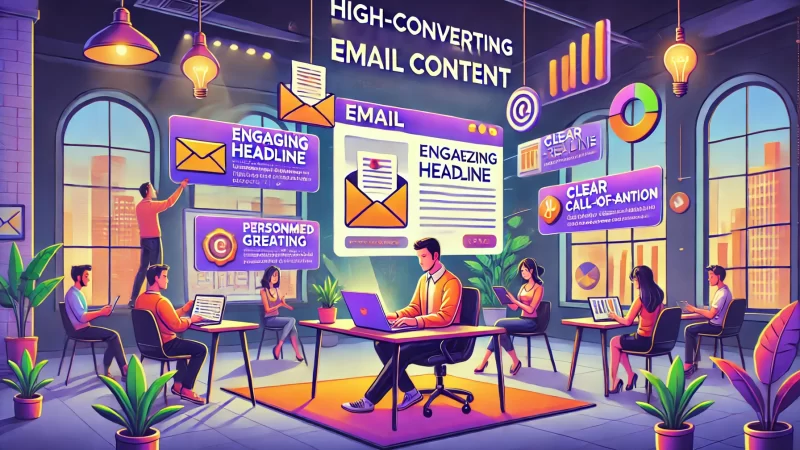
Email content is the heart of any campaign. Engaging, valuable, and actionable content encourages readers to stay connected, driving conversions while strengthening the relationship between your brand and audience.
Writing Compelling Subject Lines That Get Opened
The subject line is your first impression. A compelling one entices recipients to open your email, setting the tone for the rest of your message.
Keep subject lines short and impactful. I suggest using no more than 6-8 words to ensure they’re fully visible on most devices, increasing the chance of engagement.
Use curiosity or urgency to capture attention. Phrases like “Don’t Miss This Deal!” or “Your Exclusive Guide Awaits” create a sense of importance that prompts immediate action.
Incorporate personalization, like addressing the recipient by name. Personalized subject lines often feel more relevant, making readers more likely to open your email.
Test different subject line styles to see what resonates best. Experimenting with emojis, question-based lines, or direct offers provides insight into your audience’s preferences.
How To Structure Your Emails For Maximum Impact
An effective email structure ensures your message is easy to read, engaging, and actionable. Clear organization keeps readers focused and helps guide them toward your goals.
Start with a friendly and relatable introduction. I recommend acknowledging the recipient’s needs or referencing their past interactions to establish rapport from the beginning.
Organize your email with clear sections. Use headings, bullet points, or short paragraphs to break up text, making it visually appealing and easy to skim.
Incorporate visuals like images, GIFs, or infographics to enhance your message. These elements add interest and help emphasize key points without overwhelming the reader.
End with a strong closing and clear CTA. Whether it’s “Shop Now” or “Download Your Free Guide,” the CTA should guide readers toward the action you want them to take.
Adding Value With Engaging Email Body Content
The body content of your email is where you deliver value. Providing useful, engaging, and relevant information encourages readers to trust and connect with your brand.
Focus on solving a specific problem or fulfilling a need. I advise creating content that aligns with your audience’s challenges, such as tips, tutorials, or industry insights.
Maintain a conversational tone that feels personal. Writing as if you’re speaking directly to the recipient fosters a stronger connection and makes your emails more relatable.
Include social proof, like testimonials or success stories. This builds credibility and reassures readers that your product or service is worth their time and investment.
Keep the content concise and purposeful. Avoid overwhelming readers with too much information—stick to what matters most and provide links for further exploration if needed.
Using Strong CTAs To Drive User Action
The call-to-action (CTA) is the ultimate goal of your email. A strong CTA inspires readers to act, turning interest into tangible results like clicks, downloads, or purchases.
Make your CTA clear and action-oriented. Phrases like “Claim Your Free Trial” or “Book Your Spot” leave no ambiguity about what’s expected, encouraging decisive action.
Position the CTA prominently in your email. Whether at the end or multiple times throughout the message, ensure it’s easy to find and visually stands out.
Use contrasting colors or buttons to highlight the CTA. A visually distinct design draws attention, making it more likely for readers to engage with your offer.
Create urgency around the CTA. Mention limited availability or time-sensitive deals to motivate readers to act quickly, increasing the likelihood of conversions.
Designing Email Campaigns That Capture Attention
A well-designed email campaign ensures your message grabs attention and engages readers. Thoughtful design elements create a seamless and enjoyable experience, keeping your audience interested while encouraging them to take meaningful actions.
Key Design Principles For Email Marketing Success
Strong email design combines visual appeal with functionality, guiding readers through the message while emphasizing key points. Implementing proven principles makes your emails more effective and engaging.
Keep the design clean and uncluttered. Too many elements can overwhelm readers, so I recommend focusing on a simple layout that highlights your message clearly. Negative space helps direct attention to important sections.
Use a consistent color scheme that aligns with your brand identity. This builds recognition and trust. Choose colors that evoke the emotions you want your audience to feel, like excitement or calmness.
Readable fonts are a must. Avoid overly decorative typefaces, and ensure text sizes are large enough for easy reading. I suggest sticking to one or two font styles to maintain consistency and professionalism.
Include visual hierarchy to prioritize information. Headlines should grab attention, while supporting text guides the reader to your CTA. This natural flow makes emails easy to navigate and encourages action.
How To Use Visuals And Branding Effectively
Visuals and branding play a significant role in making your email campaigns stand out. They help create a memorable impression while strengthening your connection with the audience.
Incorporate high-quality images that support your message. Whether showcasing a product or telling a story, visuals should enhance the content. I believe images should always add meaning, not just decoration.
Use branding elements like logos, colors, and taglines consistently. This reinforces brand recognition and ensures your emails feel cohesive. I recommend sticking to your brand guidelines for all email designs.
Include animated elements like GIFs or short videos to capture attention. These dynamic visuals can highlight promotions or demonstrate features, making your emails more interactive and engaging.
Avoid overloading emails with too many visuals. A balance between text and imagery ensures your message remains clear. Too much visual clutter can distract from the purpose of your campaign.
Making Emails Mobile-Friendly And Responsive
With most users checking emails on their phones, mobile-friendly design is essential. Responsive emails adjust seamlessly to different devices, ensuring your content looks great everywhere.
Use a single-column layout for better readability on smaller screens. Multi-column designs often become distorted on mobile devices, so keeping it simple ensures clarity and ease of navigation.
Optimize images for mobile. Large, uncompressed visuals can slow loading times, leading to frustration. I suggest resizing images and using formats like JPEG or PNG to maintain quality without sacrificing speed.
Buttons and CTAs should be touch-friendly. Make them large enough to click easily on a touchscreen, with plenty of space around them to avoid accidental clicks.
Test your emails on multiple devices before sending. This step ensures your design works perfectly across different screen sizes and email clients, avoiding any unpleasant surprises for your audience.
Choosing The Right Email Marketing Tools And Platforms
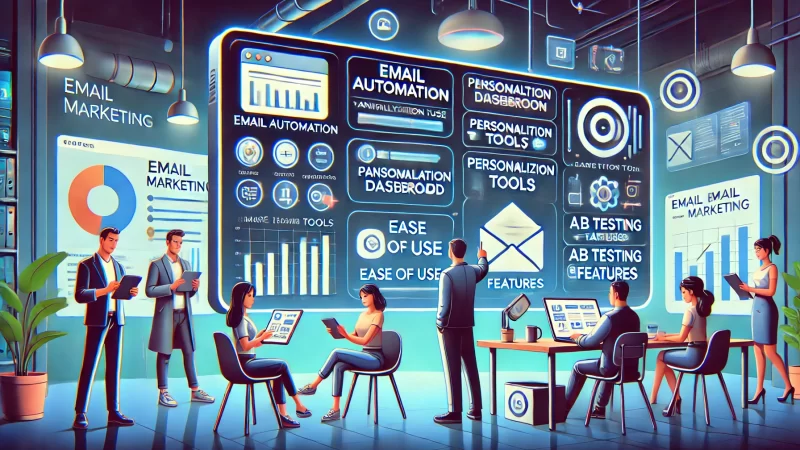
Selecting the right email marketing tools ensures your campaigns run smoothly and deliver impactful results. The ideal platform supports your goals, simplifies processes, and enhances engagement with powerful features.
Overview Of Popular Email Marketing Tools
Email marketing platforms offer a variety of tools to meet different needs. Understanding the options available helps you choose one that aligns with your objectives and resources.
Mailchimp is a user-friendly platform suitable for beginners. It offers pre-designed templates, analytics, and automation features, making it a versatile choice for small businesses.
HubSpot provides comprehensive tools for email marketing and CRM integration. I recommend this for teams looking to align their email campaigns with broader marketing strategies and sales goals.
Constant Contact specializes in simplicity and reliability. It’s an excellent option for event promotion or straightforward email campaigns, with features that are easy to navigate.
For e-commerce, platforms like Klaviyo excel at audience segmentation and behavior-based automation. This ensures tailored experiences for customers, driving higher conversions and loyalty.
Features To Look For In An Email Marketing Platform
The right platform should offer features that simplify campaign creation and enhance effectiveness. Prioritize tools that address your specific needs to maximize value.
Automation capabilities save time and streamline workflows. I suggest choosing a platform with robust automation features, like triggered emails or drip campaigns, to improve efficiency.
Analytics tools are essential for tracking performance. Metrics like open rates, click-through rates, and ROI reveal the impact of your campaigns and guide future improvements.
Customizable templates allow you to design professional emails without starting from scratch. Look for platforms with a variety of layouts to suit different campaign types.
Seamless integration with other tools enhances productivity. I advise selecting a platform that connects with your CRM, social media accounts, or e-commerce site for a unified strategy.
Comparing Free Vs. Paid Email Marketing Solutions
Choosing between free and paid options depends on your goals, budget, and the features you need. Each has its advantages, and understanding the differences helps you make an informed decision.
Free platforms like Mailchimp’s basic plan are ideal for small businesses or those just starting. They offer essential features but may have limitations like lower send volumes or fewer templates.
Paid solutions provide advanced capabilities like automation, segmentation, and in-depth analytics. I believe investing in a paid plan is worthwhile as your campaigns grow in complexity and scale.
Consider scalability when choosing a platform. Free plans might suffice initially, but paid plans often offer better support and features to accommodate a growing audience or ambitious goals.
Review the pricing models carefully. Some platforms charge based on email volume, while others base fees on the number of subscribers. Choose a structure that aligns with your usage patterns.
Scheduling And Automating Your Email Campaigns
Effective scheduling and automation can save time and improve the efficiency of your email campaigns. When done correctly, these strategies ensure your emails reach the right audience at the right moment, driving better engagement and conversions.
The Best Times To Send Marketing Emails
Timing plays a crucial role in email marketing success. Identifying the best times to send your emails ensures your audience is more likely to open, read, and act on your messages.
Sending emails during work hours, like mid-morning, often results in higher open rates. Many people check their inboxes during this time, making it ideal for business-related content or promotions targeting professionals.
For e-commerce campaigns, evenings and weekends are great times to reach your audience. I suggest testing these periods to align with when people are more relaxed and likely to browse or shop online.
Keep your audience’s time zones in mind. Segmenting your list based on location ensures messages are sent at optimal times for each group, increasing the chances of engagement across global subscribers.
Experiment with unconventional times. For instance, early morning emails might work well for early risers, while late-night messages could attract night owls. Testing different times helps you discover unique opportunities.
How To Use Email Automation For Efficiency
Email automation simplifies repetitive tasks, allowing you to focus on strategy and creativity. Automating processes like welcome emails or promotional campaigns ensures consistent communication without the need for constant manual input.
Welcome sequences are an excellent starting point for automation. These emails introduce your brand, share helpful resources, and build trust with new subscribers, setting a strong foundation for future engagement.
Drip campaigns nurture leads by delivering content over time. I recommend designing these to guide subscribers toward specific actions, like signing up for a webinar or making a purchase, at their own pace.
Triggered emails respond to user behavior, such as abandoned cart reminders or purchase confirmations. These messages are highly relevant and often result in higher engagement and conversion rates.
Automation also enables birthday or anniversary campaigns. Sending personalized greetings with special offers fosters stronger connections and encourages loyalty among your subscribers.
Managing Follow-Up Campaigns With Ease
Follow-up campaigns ensure ongoing communication, keeping your audience engaged and informed. These campaigns help maintain momentum and improve the effectiveness of your overall email strategy.
Segment your follow-up emails based on user actions, such as whether they opened the initial email or clicked a link. Tailoring your messages increases relevance and encourages further engagement.
Space out follow-ups to avoid overwhelming recipients. I suggest waiting a few days between messages, giving your audience time to respond while keeping your brand fresh in their minds.
Include varied content in each follow-up. For example, if the first email highlights a discount, the next might share customer reviews or success stories to build trust and interest.
Track engagement metrics for each follow-up. Open rates and click-through rates reveal how well your messages resonate, allowing you to adjust your approach and refine your strategy.
Testing And Optimizing Your Email Campaigns
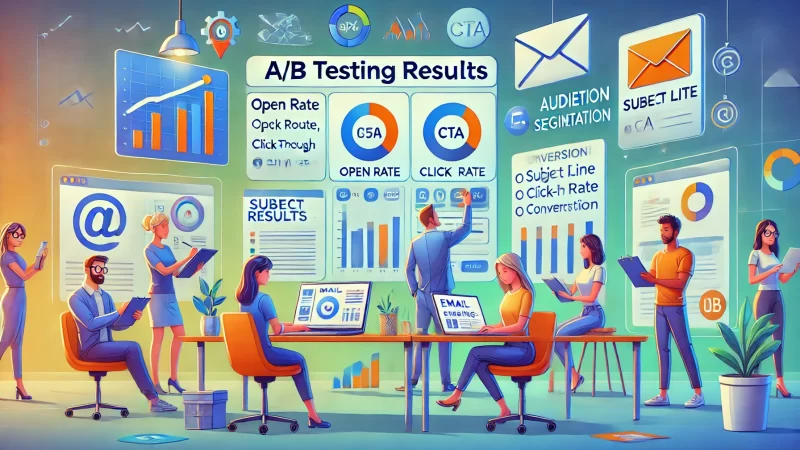
Testing and optimization are essential for refining your email campaigns. By analyzing data and making informed adjustments, you can enhance performance, boost engagement, and achieve your marketing goals more effectively.
Conducting A/B Tests For Better Performance
A/B testing compares two versions of an email to determine which performs better. This strategy helps identify what resonates most with your audience, leading to more impactful campaigns.
Test subject lines to find the most engaging option. I suggest experimenting with different tones, lengths, or styles, such as questions, numbers, or urgency, to see which drives higher open rates.
Evaluate email design elements, like layout, images, or CTA placement. Subtle changes can significantly impact how readers interact with your content, helping you discover the most effective presentation.
Experiment with sending times and days. Testing different schedules allows you to pinpoint when your audience is most active, ensuring better results for future campaigns.
Review the performance of personalization elements. For instance, test including a recipient’s name in the subject line versus leaving it out to see if it improves engagement.
Analyzing Open Rates, CTRs, And Conversions
Key performance metrics like open rates, click-through rates (CTRs), and conversions reveal how well your emails are performing. Understanding these numbers is critical for making informed decisions.
Open rates measure how many recipients opened your email. Low rates might signal issues with your subject line, sender name, or timing. I recommend testing these elements to improve visibility.
Click-through rates show how effectively your email content drives action. If CTRs are low, reevaluate your CTAs or ensure your email content aligns closely with your audience’s interests and needs.
Conversions track the ultimate goal of your campaign, such as purchases or signups. I suggest mapping the journey from email to action to identify and address any drop-off points.
Benchmarking your metrics against industry standards provides context for your performance. Use this insight to set realistic goals and identify areas for growth.
Adjusting Campaigns Based On Performance Metrics
Using data-driven insights to adjust your campaigns ensures continuous improvement. Tweaking your approach based on what works helps maximize the impact of your email marketing efforts.
Refine underperforming subject lines or CTAs. For instance, if certain phrasing doesn’t resonate, test alternatives that align better with your audience’s preferences or motivations.
Adjust email frequency to find the sweet spot between staying top-of-mind and avoiding audience fatigue. I suggest experimenting with fewer or more frequent emails to determine what works best.
Optimize segmentation strategies. If engagement is low, revisit your audience segments to ensure they’re accurately grouped based on behavior, interests, or demographics. This improves relevance and results.
Reassess your email content and design. Poorly performing emails might need more compelling visuals, streamlined layouts, or clearer messaging to capture attention and drive action effectively.
Avoiding Common Email Marketing Mistakes
Avoiding mistakes in email marketing ensures your campaigns remain effective and well-received. Missteps like spammy content or non-compliance can harm your reputation and results. Let’s explore how to sidestep these pitfalls for greater success.
Recognizing And Avoiding Spammy Practices
Spammy practices can erode trust and damage your email sender reputation. Ensuring your content is professional, relevant, and compliant with anti-spam guidelines keeps your audience engaged and protects your campaigns.
Using misleading subject lines, like false urgency or exaggerated claims, can alienate recipients. I recommend being honest and transparent in your messaging to build lasting trust and avoid spam filters.
Overloading emails with sales-focused language or too many links can trigger spam detection. Balance your emails with educational or value-driven content to maintain audience interest and reduce the risk of being flagged.
Sending unsolicited emails is a common spam mistake. Always ensure recipients have opted in to your list, respecting their choice to engage with your brand and fostering a stronger relationship.
Maintain a balanced email frequency. Bombarding subscribers with too many messages can irritate them, while infrequent emails risk losing their attention. A thoughtful schedule strikes the right balance for consistent engagement.
How To Prevent Unsubscribes With Better Engagement
Keeping subscribers engaged reduces the likelihood of them unsubscribing. Focus on delivering meaningful, personalized content that matches their preferences and maintains their interest in your brand.
Segment your email list to cater to different audience needs. When people receive messages tailored to their interests, they feel understood and valued, making them less likely to unsubscribe.
Offer variety in your content. I suggest mixing promotional emails with educational, inspirational, or entertaining content to keep your messages fresh and appealing to your audience.
Encourage feedback from subscribers. Including surveys or simple questions shows you care about their preferences, allowing you to adjust your campaigns based on their responses.
Provide easy options to update preferences. Sometimes, recipients may not want to unsubscribe but prefer fewer emails or different content. Giving them control helps maintain their connection to your brand.
Maintaining Compliance With Email Marketing Laws
Staying compliant with email marketing laws is non-negotiable. It protects your business from legal consequences and builds trust with your audience through ethical practices.
Understand regulations like GDPR, CAN-SPAM, or CASL, depending on your audience’s location. I suggest reviewing these guidelines regularly to ensure your practices remain up-to-date and lawful.
Include a clear opt-out option in every email. Allowing subscribers to unsubscribe easily shows respect for their preferences and keeps your campaigns compliant with legal requirements.
Use transparent language about how you’ll use subscriber data. A straightforward privacy policy increases trust, making recipients more likely to engage with your emails confidently.
Track and document consent. Maintain records of when and how subscribers joined your list to prove compliance if ever questioned, safeguarding your reputation and operations.
Evaluating The Success Of Your Email Marketing Campaign
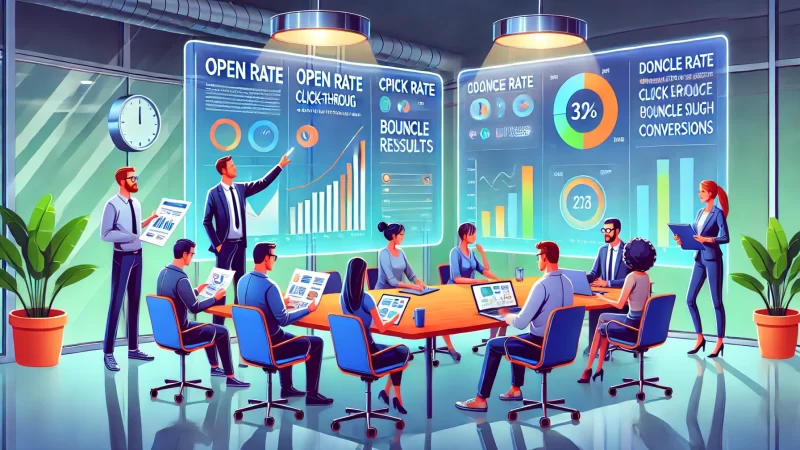
Measuring the success of your email campaigns helps identify what works and where to improve. Regular evaluation ensures your efforts deliver meaningful results, driving both engagement and growth.
Using KPIs To Measure Campaign Effectiveness
Key performance indicators (KPIs) provide valuable insights into how your campaigns perform. Tracking these metrics helps refine your strategy and ensures consistent improvements.
Monitor open rates to assess the effectiveness of your subject lines. A low open rate might signal the need for more engaging or personalized topics.
Click-through rates (CTR) reflect how well your content resonates with readers. Higher CTRs indicate that recipients find your CTAs and email body relevant and actionable.
Conversion rates measure the number of recipients who completed your desired action, such as making a purchase. I suggest analyzing this metric to gauge campaign ROI effectively.
Track bounce rates to identify issues with your email list. High bounce rates often mean invalid or outdated addresses, requiring regular list maintenance for optimal results.
Understanding ROI For Email Campaigns
Calculating the return on investment (ROI) for email campaigns reveals their financial impact. A clear understanding of ROI helps you prioritize strategies that yield the best results.
Compare revenue generated from campaigns against their costs, including platform fees and time spent. This gives a direct view of how much value your efforts are delivering.
Identify which campaigns drive the most revenue. I recommend analyzing successful campaigns to replicate effective strategies and avoid unproductive ones.
Consider long-term customer value. Emails that nurture loyal customers may not show immediate ROI but significantly contribute to overall business growth over time.
Use tools or software to automate ROI tracking. These platforms simplify calculations and provide insights, helping you make informed decisions for future campaigns.
Improving Future Campaigns Based On Insights
Analyzing past performance offers valuable lessons to enhance future campaigns. By applying data-driven insights, you can create more impactful strategies that consistently deliver better results.
Identify patterns in subscriber behavior. For instance, noting when engagement peaks can help you refine your scheduling for maximum impact.
Test and adapt your email design. If recipients respond positively to specific visuals or layouts, incorporate these elements into future emails to maintain engagement.
Incorporate feedback from surveys or recipient interactions. Listening to your audience ensures your campaigns address their needs effectively, fostering stronger connections.
Keep refining your list segmentation. The more targeted your emails, the higher the likelihood of achieving your goals, from increased CTRs to improved conversions.
Staying Ahead With Email Marketing Trends
Staying updated on email marketing trends keeps your campaigns relevant and competitive. Embracing new technologies and techniques can set your brand apart, driving better engagement and results.
The Importance Of AI In Email Personalization
Artificial intelligence (AI) has revolutionized email personalization, enabling deeper audience connections. Using AI enhances your ability to create tailored experiences that captivate readers and improve campaign performance.
AI analyzes subscriber data to predict preferences. This ensures emails are highly relevant, from product recommendations to tailored subject lines, boosting engagement.
Automation tools powered by AI streamline segmentation. They group audiences dynamically, allowing you to send personalized messages without manual effort.
AI enables predictive analytics. I believe leveraging these insights helps you anticipate what content resonates best, optimizing your strategy proactively.
Dynamic content customization, such as changing offers based on recipient behavior, ensures emails remain timely and engaging, reflecting the power of AI in personalization.
Leveraging Interactive Emails For Engagement
Interactive emails invite readers to engage directly within the message, enhancing their experience and driving actions. These features make your campaigns memorable and impactful.
Include polls or quizzes to encourage participation. Recipients enjoy interactive elements that provide value or entertainment, increasing their likelihood of engaging with your brand.
Incorporate clickable carousels or sliders to showcase products. These visually dynamic elements make exploring your offerings easy and enjoyable.
Embed videos or GIFs to highlight content. Interactive visuals capture attention and help convey messages effectively, increasing the chances of clicks and shares.
Use hover effects or animations for CTAs. These subtle yet eye-catching designs draw attention, encouraging readers to act without feeling pressured.
Emerging Trends To Watch In Email Marketing
Staying informed about emerging trends helps you innovate your campaigns. Incorporating fresh ideas ensures your emails remain effective and appealing.
Dark mode optimization is becoming essential. I suggest designing emails that look great in both light and dark themes, as more users prefer dark mode for reading.
Sustainability-focused campaigns resonate with eco-conscious subscribers. Highlighting environmentally friendly practices, like reducing email frequency, can strengthen your brand’s image.
Voice-activated email technology is on the rise. Emails compatible with smart assistants provide a hands-free experience, appealing to tech-savvy audiences.
Hyper-personalized automation continues to grow. Using advanced tools to deliver real-time, context-aware messages keeps your campaigns ahead of the curve.



